The character of war is constantly changing, and with its associated complexity and uncertainty, this is making military planning a more challenging undertaking. As a result, this requires addressing by militaries to ensure conditions are set to contribute towards successful outcomes. The concept of Operational Art has been introduced by Western Militaries to support the planning process at all levels, and to overcome this issue. Within the Australian Defence Force (ADF), Operational Art is defined as ‘the skilful employment of military forces to attain strategic goals through the design, organisation, sequencing and direction of campaigns and major operations’.[1] Additionally, military operations typically strive to be quick and efficient by being decisive against the adversary to achieve the desired end-state better.[2] But some argue that the Western Militaries (comprising anglophone nations such as the United States, United Kingdom and Australia) have a desire to seek this decisive battle or effect (now referred to as decisive operations) and that this goes against what the Operational Art concept is trying to accomplish.
This paper will argue that Operational Art is not at odds with the desire for Western Militaries to seek decisive operations and that they are instead complementary considerations within military planning. Firstly, this paper will confirm the notion that Western Militaries still actually have the desire for decisive operations to support the achievement of their end-state and provide the rationale behind this. Secondly, this paper will explore the concept of Operational Art in the Western Military context and that it is used to facilitate planning that better integrates the ends, ways, means and risk of higher strategy. Finally, this paper will show why Operational Art, when employed appropriately, is not at odds with the desire of Western Militaries to seek decisive operations, by analysing elements of the ADF Operational Art definition to show that they are complementary concepts within planning.
The desire for Decisive Operations by Western Militaries
Up to the nineteenth century, there was an inherent desire by nation-states at war to achieve the single decisive battle which would lead them to total victory. This was seen in many wars, including the Napoleonic Wars in the 1700-1800s. These wars ‘had a local, static character, limited in size and, in principle, [were] decided through one decisive battle’.[3] The desire for a single decisive act is, therefore, very much a classical view of warfare. But since the industrial revolution and the introduction of new military technologies such as armoured vehicles and aircraft, this has been a much more elusive notion to achieve. During the First World War, military leaders on both sides initially attempted to achieve a decisive victory via an annihilation approach on the Western Front. However, the changing character of war as a result of technology and concentration of massive forces instead lead to a stalemate.[4] This has continued into recent conflicts involving Western Nations such as those conflicts in Iraq/Syria and Afghanistan – all of which have been prolonged. Accordingly, there has been a desire by Western Militaries to use decisive operations in the past. Still, the reality has been that these conflicts have often been indecisive and instead occurring over extended durations. Conflicts are now more complex, and as a result, this desire for a single decisive action is no longer realistic and more than likely unobtainable.
Regardless of this historical perspective, contemporary Western Militaries still have a strong desire to seek decisive operations. Within ADF doctrine, it identifies the need for decisive operations to ‘seek to defeat an adversary’s will and/or means to conduct operations’.[5] This encapsulates both the physical destruction of an adversary and the destruction of their will to fight.[6] American doctrine requires its military objectives be ‘clearly defined, decisive, and attainable’.[7] This is supported by military scholar’s Justin Kelly and Mike Brennan who identify that the United States continues to focus on defeating the enemy quickly in combat.[8] Finally, British doctrine recognises that their objectives are ‘achieved by aggregating decisive conditions through effects and their underlying actions’.[9] Based on these ideologies, there is still an ongoing and strong desire for Western Militaries to seek decisive operations. But this continued desire is at odds with the historical experience identified above where conflicts have been prolonged.
There are several reasons why Western Militaries still desire and persist with the notion of decisive operations. Firstly, they directly and indirectly, support the defeat of an adversary quickly and efficiently. The ADF’s Principles of Armed Conflict, which underpin how it intends to conduct war, supports this with tenets such as the concentration of force and economy of effort.[10] These provide an example of militaries being able to enact decisive operations when required and to be efficient. Military scholar Milan Vego supports this by identifying that ‘the main purpose of any combat is to achieve a quick and decisive result and thereby avoid high losses in personnel and materiel’.[11] By preventing the prolongment of a conflict, it allows militaries to avoid attritional warfare and conserve their limited resources, aligning with the economy of effort principle. In addition to this, Western Militaries focus on decisive operations due to their underlying military power and the associated advantage this has typically provided them. This has been shown by America’s and Britain’s more recent operational experience in the Middle East region against the Islamic State of Iraq and the Levant (ISIL), where they have held a considerable power advantage over these non-state actor adversaries. Here they have used superior firepower to achieve knock-out effects at the tactical levels which has provided success at the lower levels and supported the achievement of the end-state. The primary reason for their current focus on decisive operations is that it contributes to military efficiency and ultimately towards the end-state.
Ultimately the Western Military desire for quick and efficient decisive operations is only really achieved by using the available forces and implementing suitable ways, and this is all underpinned by effective planning. By doing so, this addresses the character of the conflict and its inherent complexity and uncertainty. But this decisive approach may not always be the best approach to achieve the required end-state or even be a viable option for the short or long term. The most suitable way to address the situation being encountered will typically only be identified through the comprehensive use and application of Operational Art.
The use of Operational Art by Western Militaries
Operational Art was introduced by Western Militaries in the 1980s to address deficiencies in their approaches to the management of military operations and campaigns. In addition to the achievement of victory via a decisive battle becoming near impossible as identified previously, another key reason for the emergence of the Operational Art concept in Western Militaries was that ‘past wars were won or lost at the strategic and operational levels, not at the tactical level’.[12] As a result, militaries started to formally recognise the need for ‘a number of battles to be connected in such a way as to most effectively and economically disarm the enemy’.[13] Additionally, Operational Art was introduced to seek and exploit opportunities to gain an advantage over the adversary, while at the same time better managing the problem at hand.[14] These factors have been evident to varying success in all major conflicts that have involved Western Militaries throughout the twentieth century, including the First and Second World Wars, as well as wars in Korea, Vietnam and the Persian Gulf. This rationale which has underpinned the introduction of Operational Art into Western Military thought has intended to improve the design and execution of operations, and to ultimately achieve the overarching military strategy. Importantly, it has allowed militaries to obtain the most advantageous conditions and set them up for success.
In the end, Operational Art provides an approach that integrates the ends, ways and means for military forces. Using the ADF definition identified above, Operational Art includes a combination of the use of military forces (means), through the operational design and arrangement of operations (ways), to attain the required strategic objectives (ends). To note, the ADF doctrine also identifies that Operational Art takes into consideration the possible costs (risks).[15] UK doctrine further supports this, stating that Operational Art helps to ‘determine which forces [means] conduct what actions in time and space to create effects [ways] and achieve objectives [ends]’.[16] Overall, Operational Art within Western Militaries provides a framework that underpins the design and arrangement of operations, addressing overly complex and uncertain problems. Operational Art is not operational-level (a level of conflict) planning, but it instead supports this separate but complementary process. With this increased understanding of both Operational Art and decisive operations, this paper will now show why these concepts are not at odds with each other in Western Military thought, and instead are complementary. This analysis will be based on the main elements of the definition of Operational Art identified previously, namely the military end-state, the creativeness of commanders and their staff, the COG concept and the arrangement of operations.
The complementary nature of Decisive Operations and Operational Art
The first reason why Operational Art is not at odds with the desire for decisive operations is that they both strive to achieve an end state. As per the ADF definition identified above, Operational Art focuses on the attainment of strategic goals.[17] Vego supports this by stating that it is about providing the framework for linking tactical actions with the strategic objectives.[18] Meanwhile, decisive operations also support as it helps give the ‘actions necessary to defeat an adversary, and/or achieving conditions that contribute to the end state’.[19] Military scholar Bernard Loo supports this by identifying that decisive operations are about ‘creating effects that facilitate the attainment of broader military and ultimately political objectives’.[20] This was also clear in Operation Desert Storm during the 1991 Gulf War. The US-led coalition used their shock and awe approach to provide decisive effects that supported the overall goal of pushing Iraqi forces out of Kuwait.[21] Their operational approach effectively and efficiently achieved the coalition aims, and this was enacted with decisive operations. Accordingly, the attainment of military goals is central to both concepts, and the above examples show that Operational Art and decisive operations as not being at odds with each other. They are instead complementary considerations in the planning and execution of military operations.
The second reason why Operational Art is not at odds with the desire for decisive operations is that they both require the skill and creativity of the commander and their planning staff to be effective. Operational Art requires ‘broad vision, the ability to anticipate and the skill to plan, prepare, execute, and assess’.[22] On the other hand, to identify and enact decisive operations, the commander and their staff need to determine the circumstances that support this and brings it to fruition.[23] This also requires skill, experience, and imagination of those involved. To provide an example, the amphibious landing operations at Inchon during the Korean War allowed the American and United Nations forces to gain the advantage, pushing the North Korean forces out of South Korean territory. Led by General Douglas MacArthur and his staff, this showed their use of creativity resulting in a decisive effect.[24] MacArthur, therefore, used a form of Operational Art to significant effect, even though it was still not able to bring the war to an end by itself. The imagination and creativity of commanders and their planners help to address the complexity and uncertainty which are inherent in war and also allows them to identify the best way to go about achieving it – which will likely include some form of decisive operations. This again shows Operational Art and decisive operations as not being at odds with each other as they both require skill and imagination. These concepts are again complementary.
The third reason why Operational Art is not at odds with the desire for decisive operations is that they both require a focus on the enemy Centre of Gravity (COG) to be effective. The ADF defines COG as ‘the primary entity that possesses the inherent capability to achieve an objective or the desired end state’,[25] and it is where the belligerent ‘derives its freedom of action, physical strength or will to fight’.[26] When Operational Art was introduced in the 1980s by the United States, a key focal point for it was the ‘concentration of superior combat power against [the COG] to achieve decisive success’.[27] ADF doctrine goes on to identify that the decisive engagement aims to achieve results ‘generally by attacking and destroying the adversary’s will and cohesion’.[28] This is usually a key part of the COG. Strategy and military scholar Lawrence Freedman agrees with this, identifying that the COG, ‘when attacked can have a decisive effect or else possibly result in consequences with potentially decisive effects’.[29] The Vietnam War’s Operation Linebacker I/II were highly effective at destroying enemy targets by the American-led forces. However, they were not decisive alone as they were not attacking the real COG of the North Vietnamese forces – likely a combination of their will to supporting the communist struggle and their source of supplies located outside of North Vietnam.[30] The above examples again show that the concepts of decisive operations and COG are inherently linked, and again are complementary concepts.
The final reason why Operational Art is not at odds with the desire for decisive operations is that they both involve the arrangement of multiple operations to be effective. Today, a series of several operations are usually required to be successful in the end, and these need to organised appropriately.[31] The design and arrangement of these operations are at the heart of Operational Art. But as part of this arrangement, many types of operations can be used. The ADF identifies that ‘some will have a shaping purpose, intended to create conditions for successful decisive engagement, while others will be purely decisive engagement’.[32] But it also identifies that ‘decisive operations are the focal point around which the overall campaign is developed and priorities determined’.[33] During Operation Iraqi Freedom in 2003, coalition forces achieved decisive victories against the Iraqi government forces, leading to the declaration of ‘mission accomplished’ by the United States less than two months after major combat operations commenced. But this was followed by a prolonged conflict involving nation-building and counter-insurgency.[34] This provides an example of a poorly applied arrangement of operations because if Operational Art was used more effectively, the coalition forces would have likely identified the need for these follow-on phases and planned accordingly, thereby potentially avoiding this prolonged conflict. Therefore, it is the arrangement of multiple operations comprising decisive and other types of operations that ultimately provides the overall decisive outcome. This again shows Operational Art and decisive operations as not being at odds with each other and being complementary concepts.
However, there is also an argument that the desire for decisive operations is actually at odds with Operational Art as it narrows the focus of planning to a single approach to war – one that focuses on decisiveness based on superior military power. This potentially limits the creativity aspect of Operational Art by discounting additional options that could address the ends, ways, means and risk. But as military scholar Wilson Blyth identifies, ‘it would be absurd to teach Operational Art as a kind of ready-made scheme or recipe. The very essence of Operational Art presupposes freedom of methods and forms which should be carefully chosen each time to fit a situation’.[35] Additionally, decisive operations are not used in isolation by militaries. Instead, they work concurrently and sequentially with other types of effects, such as shaping operations, to achieve the overall end-state.[36] This can be seen within the operations against ISIL during the 2010s. Even though decisive operations were used, the coalition forces identified non-kinetic effects to counter this group, including those in the information and cyber domain, likely determined by their planning process and underpinned by Operational Art.[37] This shows that their approach was not narrowed due to their military power advantage. Based on this, the desire for decisive operations does not entirely limit or restrict the focus of planners. Instead, it provides a type of desirable effect that provides a beneficial option and input, and this will be identified during the appropriate application of Operational Art. The argument that these concepts are at odds with each other is therefore not valid.
Conclusion
This paper has shown that the Western Militaries desire for decisive operations is not at odds with the concept of Operational Art and that they are instead complementary considerations within planning. Firstly, the paper has shown that there is still a desire by Western Militaries to conduct decisive operations to achieve their end-state, mainly as it provides an efficient and effective way to use military power. Secondly, the paper has shown that Operational Art is used by Western Militaries to facilitate planning to better integrate the ends, ways, means and risk across the various levels of war. Finally, the paper has shown that Operational Art, when employed appropriately, is not at odds with the desire of Western Militaries to achieve a decisive operation. Instead, these concepts have commonalities across the military end-state, the creativeness of commanders and their staff, the COG concept and the arrangement of operations – all components of the Operational Art definition. Accordingly, they are not at odds with each other and instead are complementary.
Ultimately, Operational Art and decisive operations complement each other to achieve the military end-state. Past wars have shown that neither superior military power, technology or tactics – including decisive effects, will ensure victory alone.[38] Operational Art, therefore, provides a mechanism to bridge the gap across the ends, ways and means of Western Militaries, to attempt to make sense of the complex and dynamic system in which they operate today, and will continue to do so into the future. The Operational Art concept will only maintain its utility if it can continually adapt to the environment that it is being utilised within.[39] In the end, the skilful and effective application of Operational Art will contribute towards achieving the strategic objectives, and therefore military success. Those Western Militaries that harness the power of Operational Art and employ it properly will likely gain a considerable advantage in conflicts. And those Western Militaries that consider a variety of ways to addressing the problems, including decisive operations, will likely be more successful. This is the Western Military approach to war, and this is likely to continue even as the character of war evolves rapidly because of changing technology and geopolitical factors. Operational Art and decisive operations are, therefore, here to stay and will act in a complementary way.
Squadron Leader Benjamin Abrahams, is an aeronautical engineering officer in the Royal Australian Air Force. He is a graduate of the Australian Defence Force Academy and Australian War College.
Abaianiţi, Cristian. “Operational Art: Essential Component of Naval Doctrine.” Bulletin of “Carol I” National Defence University, 2019, 25–34.
Abed Al-Jabouri, Najim, and Sterling Jensen. “The Iraqi and AQI Roles in the Sunni Awakening.” PRISM 2, no. 1 (2010): 3–18.
Anderson, David L. “The Vietnam War and Its Enduring Relevance.” In The Columbia History of the Vietnam War, edited by David L. Anderson, ProQuest Ebook., 1–89. New York, NY: Columbia University Press, 2010.
Australian Department of Defence. “ADDP 3.0 Campaigns and Operations AL1.” Defence Publishing Service, March 4, 2013.
—. “ADFP 5.0.1 Joint Military Appreciation Process.” Directorate Publishing, Library and Information Services, 2019.
Bailey, Jonathan. “The First World War and the Birth of Modern Warfare.” In The Dynamics of Military Revolution 1300-2050, edited by Macgregor Knox and Williamson Murray, 132–53. Cambridge: Cambridge University Press, 2001.
Blythe, Wilson C. “A History of Operational Art.” Military Review, no. November-December (2018): 37–49.
Cosmas, Graham A. MACV: The Joint Command in the Years of Withdrawal, 1968-1973. Washington DC: Center of Military History, United States Army, 2006.
Daddis, Gregory A. Westmoreland’s War: Reassessing American Strategy in Vietnam. Proquest Ebook. New York, NY: Oxford University Press, 2014.
Dickson, LCol Richard. “Operational Art in a Middle-Power Context: A Canadian Perspective.” Monograph. School of Advanced Military Studies, United States Army Command and General Staff College, May 26, 2004.
Doolan, Ken. “The Gulf Challenge.” In Maritime Power in the 20th Century: The Australian Experience, edited by David Stevens, 199–214. Sydney: Allen & Unwin, 1998.
Dougherty, Christopher M. “Why America Needs a New Way of War.” Washington DC: Center for a New American Security, 2019.
English, Allan D., Daniel Gosselin, Howard Coombs, and Laurence M. Hickey, eds. The Operational Art: Canadian Perspectives: Context and Concepts. Winnipeg: Canadian Defence Academy Press, 2005.
Evans, Michael. “The Closing of the Australian Military Mind,” 2020, 28.
Freedman, Lawrence. “Stop Looking for the Center of Gravity.” Texas National Security Review: War on the Rocks (blog), June 24, 2014.
Guenter, Lewy. America in Vietnam. ProQuest Ebook. New York: Oxford University Press, 1980.
Iron, Richard. “The Charge of the Knights: The British in Basra, 2008.” The RUSI Journal 158, no. 1 (2013): 54–62.
Kelly, Justin, and Mike Brennan. Alien: How Operational Art Devoured Strategy. Carlisle Barracks, Pa.: U.S. Army War College, 2009.
Lambeth, Benjamin S. The Unseen War: Allied Air Power and the Takedown of Saddam Hussein. Annapolis, MD: Naval Institute Press, 2013.
Loo, Bernard Fook Weng. “Decisive Battle, Victory and the Revolution in Military Affairs.” Journal of Strategic Studies 32, no. 2 (2009): 189–211.
Lopez Keravuori, Rose. “Lost in Translation: The American Way of War.” Small Wars Journal, 2011, Online.
Lowe, Donald, and Tim McKay. “Towards a Theory of Joint,” n.d., 21.
Malkasian, Carter. A History of Modern Wars of Attrition. Westport, CT: Praeger Publishers, 2002.
McKenna, Tim, and Tim McKay. “Australia’s Joint Approach: Past, Present and Future.” Joint Studies Paper Series No. 1. Canberra ACT, 2017.
Olsen, John Andreas. “Operation Desert Storm, 1991.” In A History of Air Warfare, edited by John Andreas Olsen, 177–200. Washington DC: Potomac Books, 2010.
O’Neill, Robert. Australia in the Korean War 1950-53. Vol. 1. Canberra: Australian War Memorial and Australia Government Publishing Service, 1981.
Peters, Ralph. “In Praise of Attrition.” Parameters, 2004, 9.
Philpott, William. Attrition: Fighting the First World War. London: Abacus, 2014.
Pribbenow, Merle L., trans. Victory in Vietnam: The Official History of the People’s Army of Vietnam, 1954-1975. Lawrence, KS: University Press of Kansas, 2002.
Riley, Jonathon. Decisive Battles: From Yorktown to Operation Desert Storm. ProQuest Ebook: Bloomsbury Publishing, 2010.
Scott, Trent. “The Lost Operational Art: Invigorating Campaigning into the Australian Defence Force.” Study paper (Land Warfare Studies Centre; no. 319). Canberra, ACT, 2011.
Smith, Daniel J, Kelley Jeter, and Odin Westgaard. “Three Approaches to Center of Gravity Analysis: The Islamic State of Iraq and the Levant.” Joint Forces Quarterly, no. 3rd Quarter (2015): 129–36.
Strachan, Hew. The Direction of War: Contemporary Strategy in Historical Perspective. Ebook. Cambridge: Cambridge University Press, 2013.
—. “The First World War as a Global War.” First World War Studies 1, no. 1 (2010): 3–14.
Strange, Joseph L., and Richard Iron. “Center of Gravity: What Clausewitz Really Meant.” Joint Forces Quarterly, no. 35 (2004): 20–27.
Thompson, Wayne. “Operations Over North Vietnam, 1965-1973.” In A History of Air Warfare, edited by John Andreas Olsen, 107–26. Washington DC: Potomac Books, 2010.
Topor, Ștefan-Claudiu. “The Operational Art – The Main Instrument Used by Commanders in Achieving the Desired Effects to Accomplish the Proposed End-State,” n.d.
Tyler, Brian J. “Intelligence and Design: Thinking about Operational Art.” Fort Belvoir, VA: Air University, School of Advanced Air and Space Studies, 2014. https://doi.org/10.21236/ADA609404.
UK Ministry of Defence. “AJP-5: Allied Joint Doctrine for the Planning of Operations (UK Joint Doctrine) Edition A Version 2.” NATO Standardization Office, May 2019.
United States Department of Defense. “JP 5-0 Joint Planning.” United States Department of Defense, June 16, 2017.
Vego, Milan. “On Operational Art.” Strategos 1, no. 2 (2017): 15–39.
—. “Operations Short of War and Operational Art.” Joint Force Quarterly 98 (September 10, 2020). https://www.whs.mil/News/News-Display/Article/2343293/operations-short-of-war-and-operational-art/.
Ward, Lincoln. “Operational Art: How Do You Know If You Are Doing It Right.” Small Wars Journal, no. Online (2016). https://smallwarsjournal.com/jrnl/art/operational-art-how-do-you-know-if-you-are-doing-it-right.
Weltman, John J. World Politics and the Evolution of War. Baltimore: The John Hopkins University Press, 1995.
[1] Australian Department of Defence, “ADDP 3.0 Campaigns and Operations AL1” (Defence Publishing Service, March 4, 2013), 1–15.
[2] Bernard Fook Weng Loo, “Decisive Battle, Victory and the Revolution in Military Affairs,” Journal of Strategic Studies 32, no. 2 (2009): 206.
[3] Cristian Abaianiţi, “Operational Art: Essential Component of Naval Doctrine,” Bulletin of “Carol I” National Defence University, 2019, 26.
[4] Rose Lopez Keravuori, “Lost in Translation: The American Way of War,” Small Wars Journal, 2011, Online.
[5] Australian Department of Defence, “ADDP 3.0 Campaigns and Operations AL1,” 9–2.
[6] Jonathon Riley, Decisive Battles: From Yorktown to Operation Desert Storm (ProQuest Ebook: Bloomsbury Publishing, 2010), 2.
[7] United States Department of Defense, “JP 5-0 Joint Planning” (United States Department of Defense, June 16, 2017), IV–20.
[8] Justin Kelly and Mike Brennan, Alien: How Operational Art Devoured Strategy (Carlisle Barracks, Pa.: U.S. Army War College, 2009), 116.
[9] UK Ministry of Defence, “AJP-5: Allied Joint Doctrine for the Planning of Operations (UK Joint Doctrine) Edition A Version 2” (NATO Standardization Office, May 2019), 3–10.
[10] Australian Department of Defence, “ADDP 3.0 Campaigns and Operations AL1,” 1–10, 1–11.
[11] Milan Vego, “On Operational Art,” Strategos 1, no. 2 (2017): 16.
[12] Vego, 35.
[13] Kelly and Brennan, Alien: How Operational Art Devoured Strategy, 88.
[14] UK Ministry of Defence, “AJP-5: Allied Joint Doctrine for the Planning of Operations (UK Joint Doctrine) Edition A Version 2,” 1–3.
[15] Australian Department of Defence, “ADFP 5.0.1 Joint Military Appreciation Process” (Directorate Publishing, Library and Information Services, 2019), 1–3.
[16] UK Ministry of Defence, “AJP-5: Allied Joint Doctrine for the Planning of Operations (UK Joint Doctrine) Edition A Version 2,” 1–3.
[17] Australian Department of Defence, “ADDP 3.0 Campaigns and Operations AL1,” 1–15.
[18] Vego, “On Operational Art,” 24.
[19] Australian Department of Defence, “ADDP 3.0 Campaigns and Operations AL1,” 9–5.
[20] Loo, “Decisive Battle, Victory and the Revolution in Military Affairs,” 206.
[21] Riley, Decisive Battles: From Yorktown to Operation Desert Storm, 210.
[22] UK Ministry of Defence, “AJP-5: Allied Joint Doctrine for the Planning of Operations (UK Joint Doctrine) Edition A Version 2,” 1–4.
[23] Riley, Decisive Battles: From Yorktown to Operation Desert Storm, 5.
[24] Ralph Peters, “In Praise of Attrition,” Parameters, 2004, 2.
[25] Australian Department of Defence, “ADFP 5.0.1 Joint Military Appreciation Process,” 3–6.
[26] Australian Department of Defence, “ADDP 3.0 Campaigns and Operations AL1,” 5–3.
[27] Allan D. English et al., eds., The Operational Art: Canadian Perspectives: Context and Concepts (Winnipeg: Canadian Defence Academy Press, 2005), 16.
[28] Australian Department of Defence, “ADDP 3.0 Campaigns and Operations AL1,” 5–14.
[29] Lawrence Freedman, “Stop Looking for the Center of Gravity,” Texas National Security Review: War on the Rocks (blog), June 24, 2014.
[30] Carter Malkasian, A History of Modern Wars of Attrition (Westport, CT: Praeger Publishers, 2002), 201.
[31] Abaianiţi, “Operational Art: Essential Component of Naval Doctrine,” 29.
[32] Australian Department of Defence, “ADDP 3.0 Campaigns and Operations AL1,” 5–13.
[33] Australian Department of Defence, 5–13.
[34] Najim Abed Al-Jabouri and Sterling Jensen, “The Iraqi and AQI Roles in the Sunni Awakening,” PRISM 2, no. 1 (2010): 3.
[35] Wilson C. Blythe, “A History of Operational Art,” Military Review, no. November-December (2018): 47.
[36] Australian Department of Defence, “ADDP 3.0 Campaigns and Operations AL1,” 9–6.
[37] Daniel J Smith, Kelley Jeter, and Odin Westgaard, “Three Approaches to Center of Gravity Analysis: The Islamic State of Iraq and the Levant,” Joint Forces Quarterly, no. 3rd Quarter (2015): 129–36.
[38] Vego, “On Operational Art,” 15.
[39] Blythe, “A History of Operational Art,” 47.
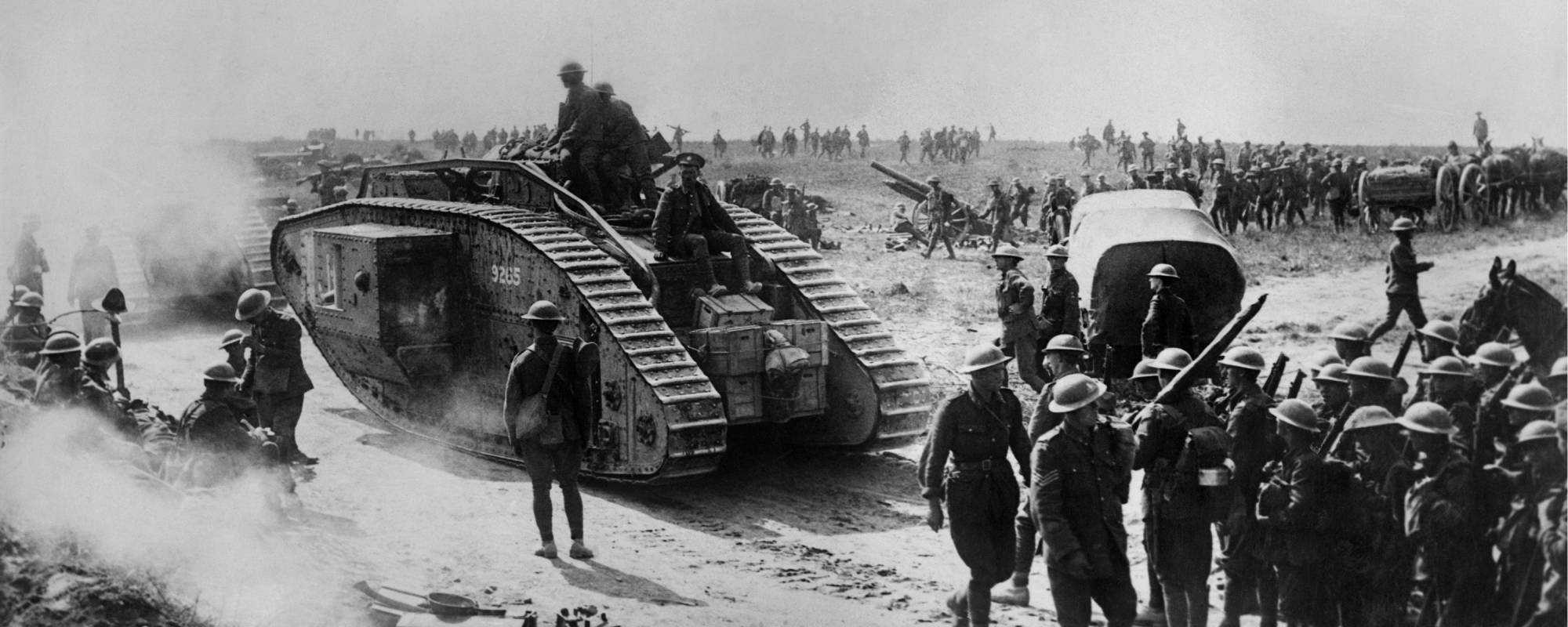

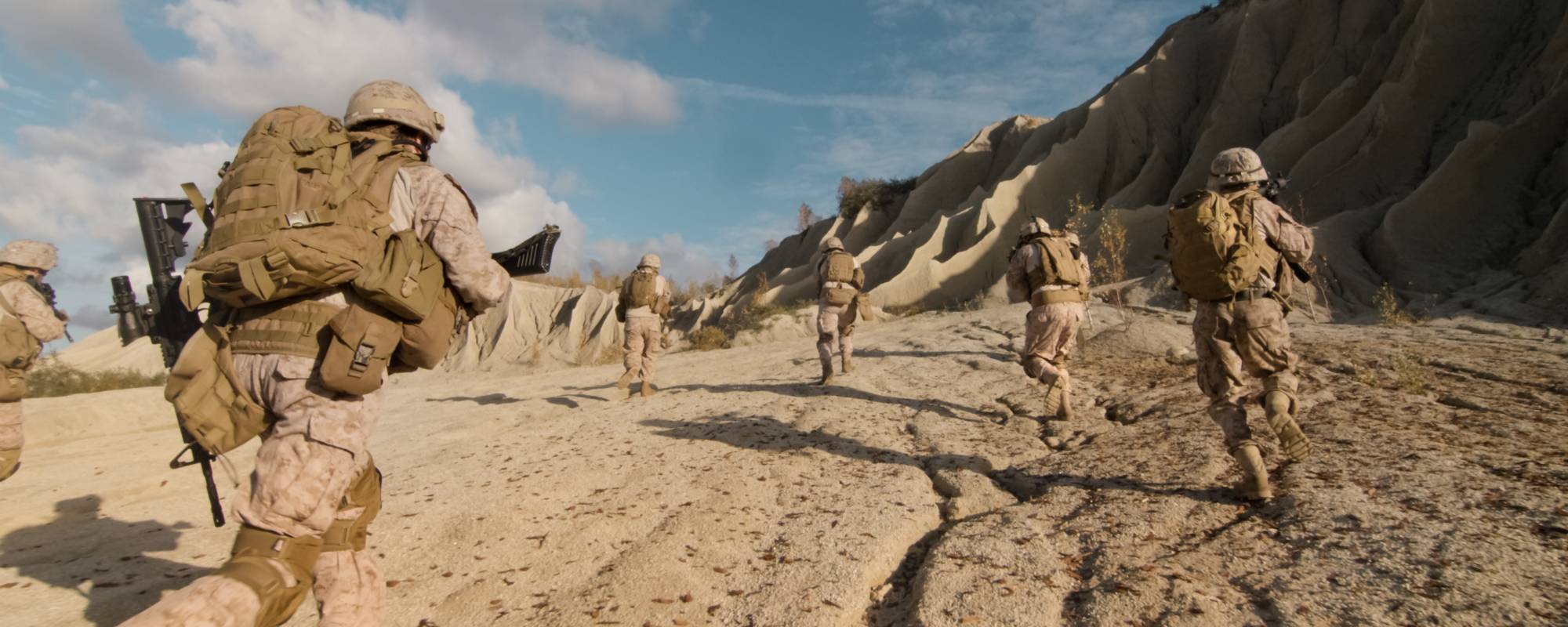
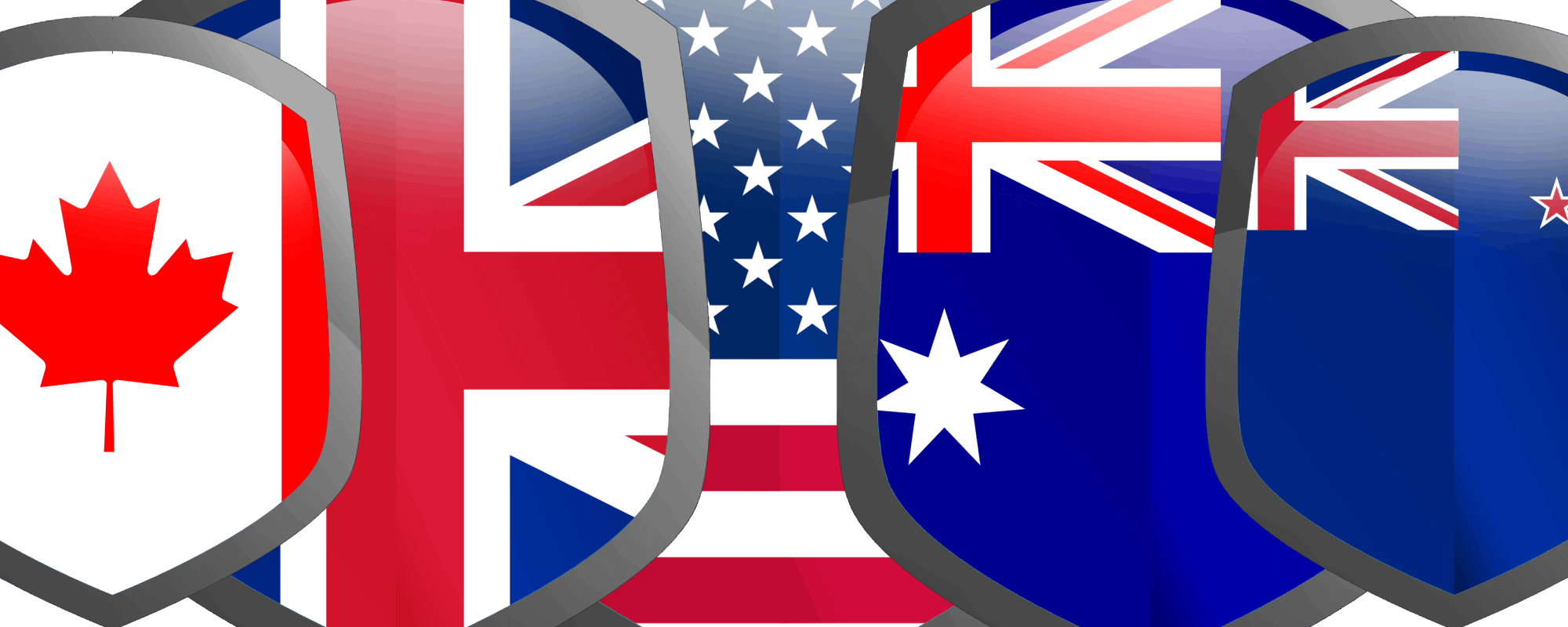



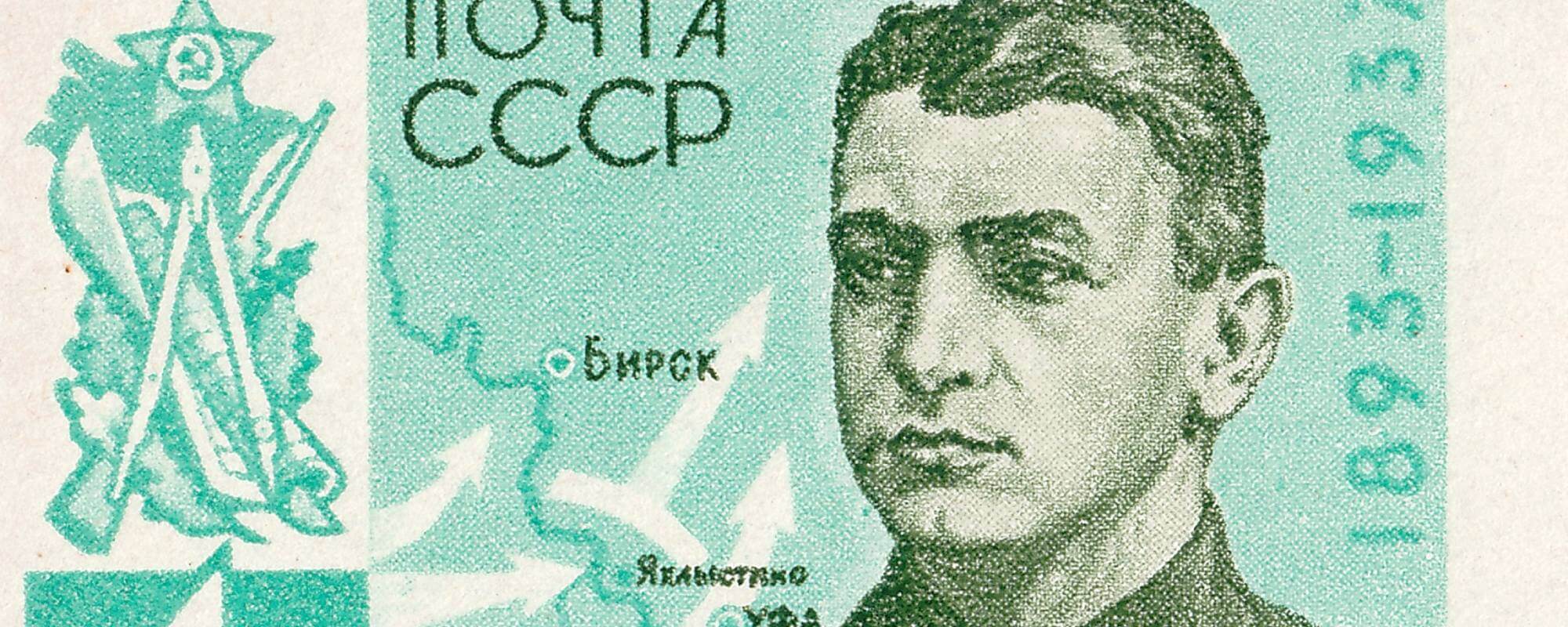
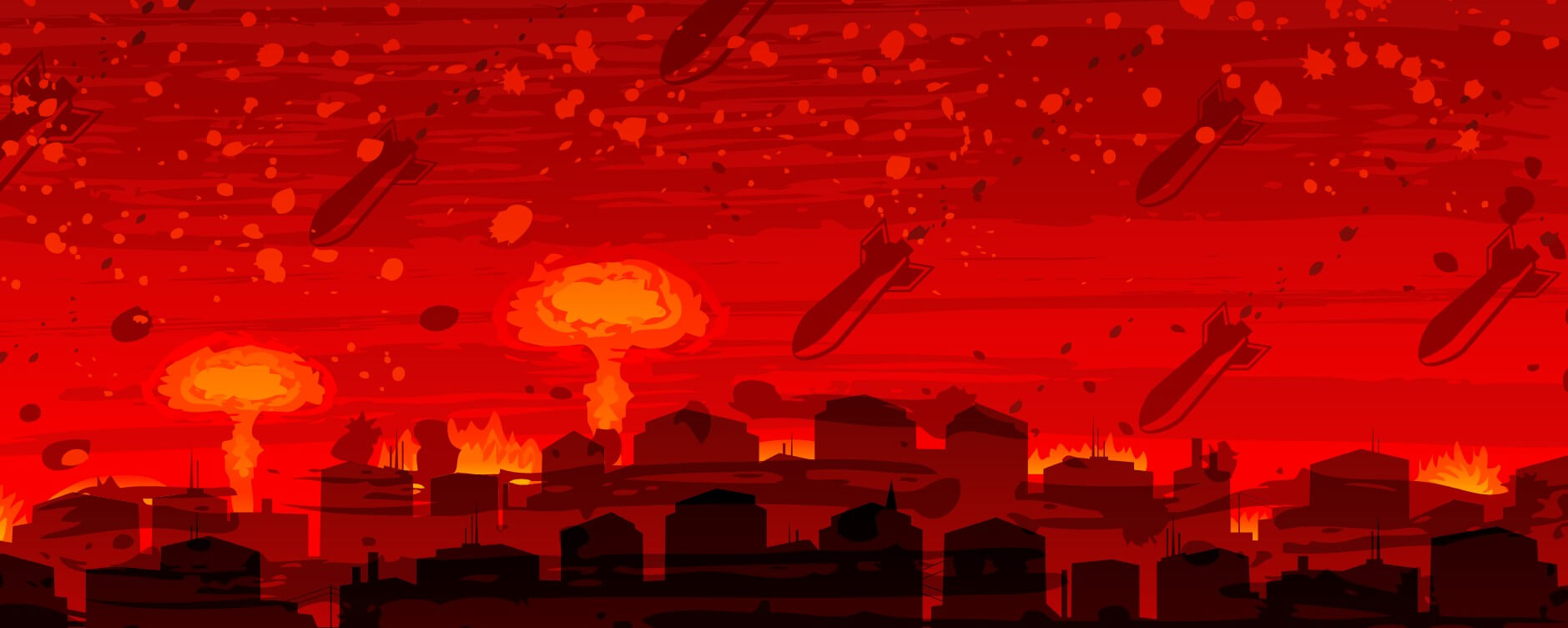
Comments
Start the conversation by sharing your thoughts! Please login to comment. If you don't yet have an account registration is quick and easy.